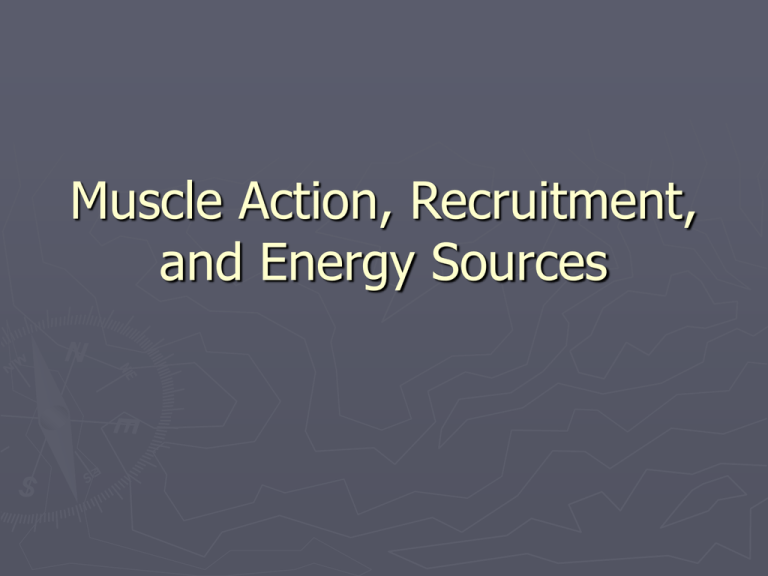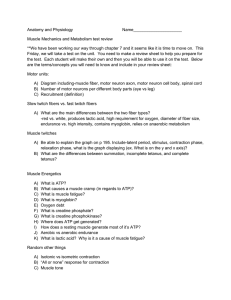Muscle Action, Recruitment, and Energy Sources
advertisement

Muscle Action, Recruitment, and Energy Sources Muscle Activation ► Caused by message from brain ► Message sent along motor neuron (nerve cell attached to muscle) ► M.n. cleft ends in synaptic Synapse ► Synaptic cleft terminates in sarcolemma (outside of muscle cell) ► Releases acetylcholine, which causes sarcolemma to release Ca+ ions into muscle cell ► Begins muscle contraction Action Potential ► Influx of Ca+ ions causes an electrical current called action potential ► Once sarcolemma is activated, begins chain reaction along entire muscle cell Remember ► Each muscle is composed of hundreds of muscle cells stacked into a bundle ► So far we have only activated ONE muscle fiber ► When a single muscle fiber is activated, it is an “all-or-nothing” response Muscle recruitment ► If more force is needed, nerve will activate more muscle fibers in the fascicle (muscle recruitment) Another way to provide more force ► Nerve can also increase rate of stimulation, causing muscle to contract faster ► Can reach complete tetanus (full contraction with no relaxation) Other forms of contraction ► Twitch- short, weak signal causes brief contraction ► Summation- contraction rate increases (no complete relaxation) ► Incomplete tetanus – faster rate; contractions closer together Complete Tetanus ► Continuous contraction with no relaxation ► Evident exercise in isometric ► Also happens as a result of some diseases and infections Rabies C. tetani In review ► Two ways to increase force Recruit more muscles Increase rate of contraction Energy for Contraction ►3 possibilities 1) Aerobic respiration 2)Lactic acid fermentation 3)Direct phosphorylation (fastest, but only lasts about 20 seconds) Direct Phosphorylation ► ADP encounters Creatine Phosphate (CP) ► Takes phosphate molecule to form ATP, leaves creatine ► CP only present in muscle cells





